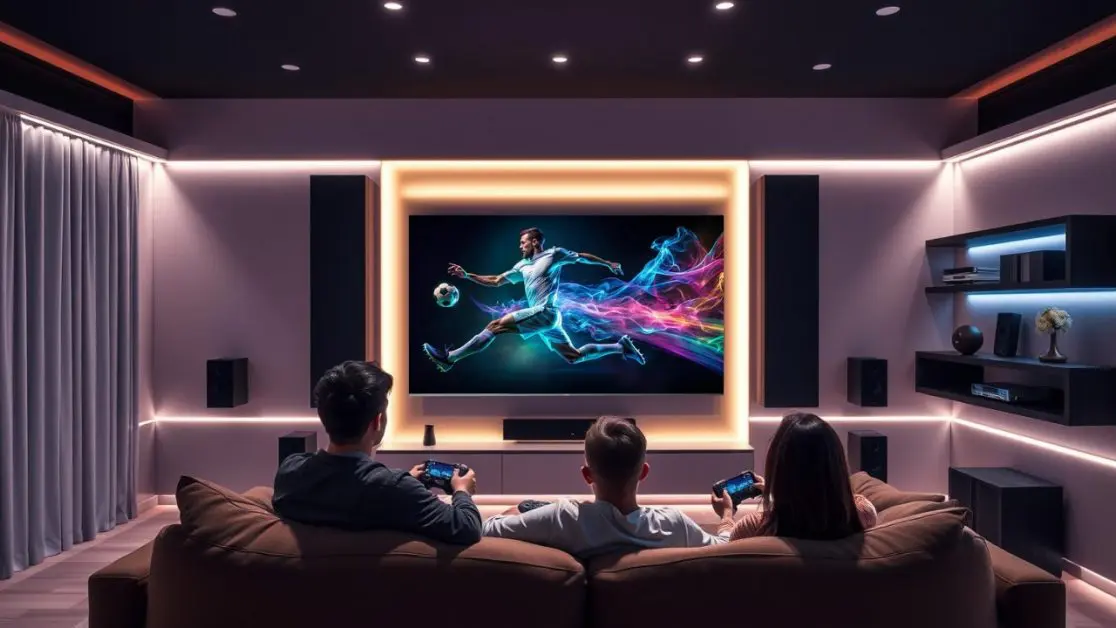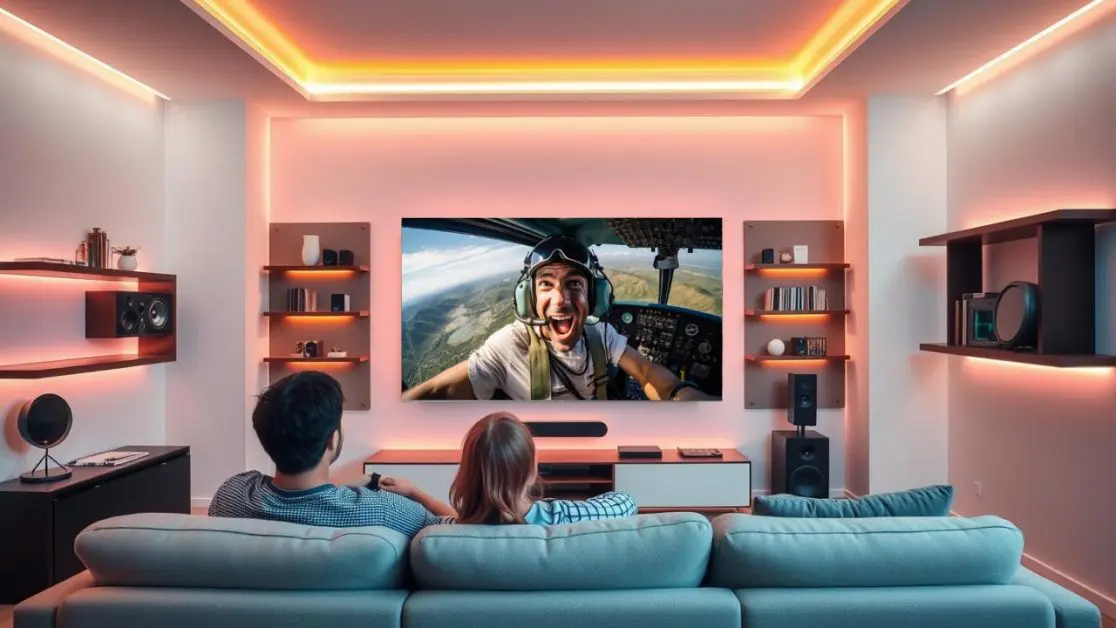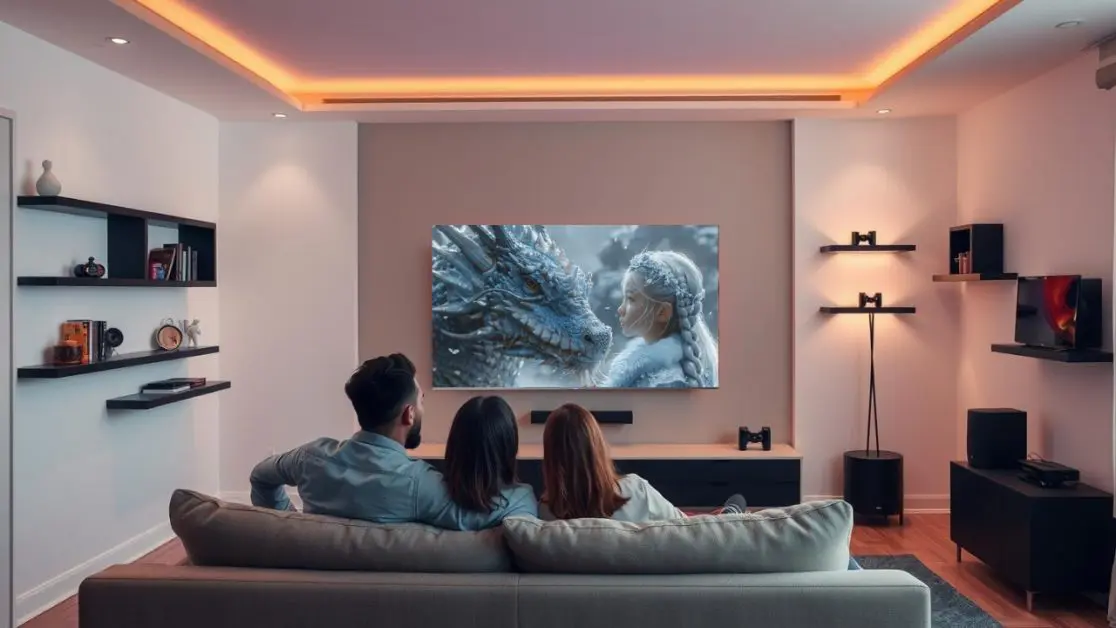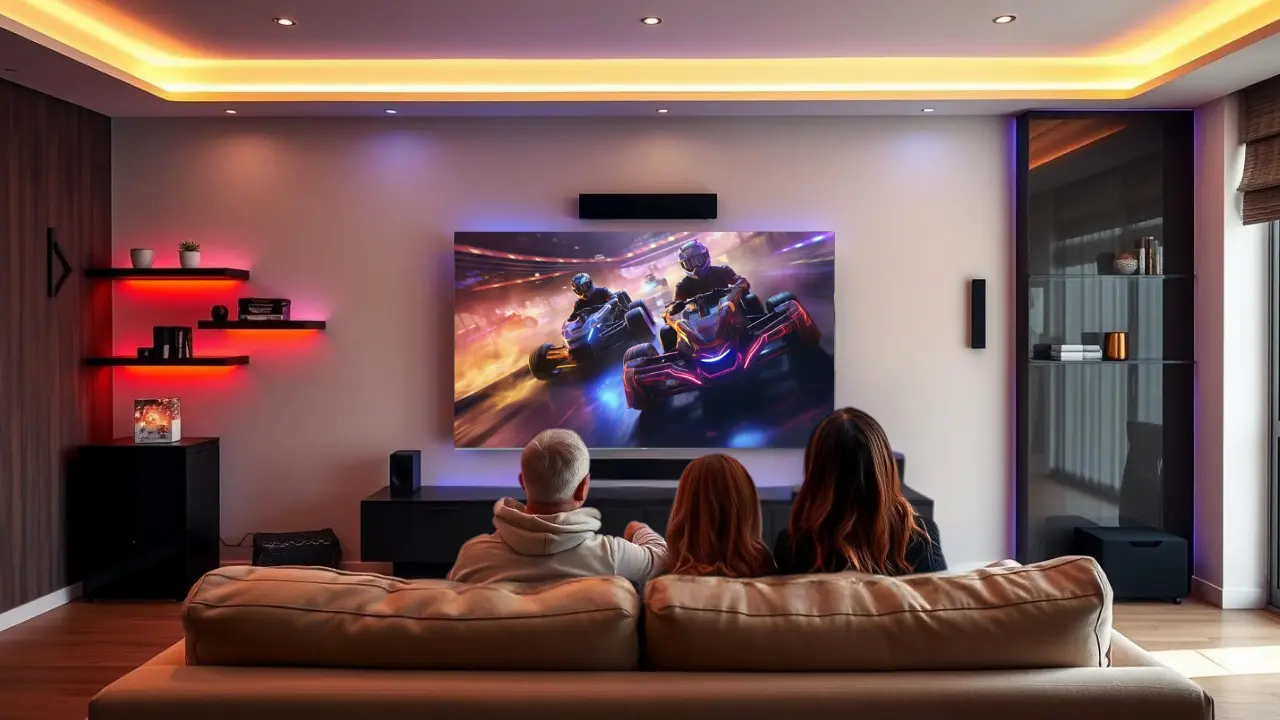Okay i know you might find this too technical, but let me explain in the easiest manner possible.
You’ve just unboxed your brand-new Mini LED TV. You’re ready to binge your favourite show or fire up the PlayStation. But here’s what nobody tells you at the store, your viewing experience can be held back by something called refresh rate.
It sounds technical, right? But stick with me, because in 2025, this one detail might just make or break your entertainment game.
So let’s break it down like a friend who knows their gadgets, and wants you to make the smartest choice.
What is Refresh Rate and Why Should You Care?

Okay, quick crash course.
Refresh rate is how many times your TV updates the image on the screen every second. A standard TV does this 60 times a second. That’s 60Hz. But a 144Hz TV? It refreshes the screen 144 times in a single second.
Think of it like turning pages in a flipbook. The faster you flip, the smoother the animation looks. That’s why a higher refresh rate gives you that buttery smooth motion, especially during fast-moving scenes, like a Formula 1 race or a tense Call of Duty session.
Now here’s the real talk, does that extra smoothness make a difference to you? If you’ve ever said, “Why does the picture look choppy?” or “The movement looks weird when I watch cricket in HD,” then yes, it absolutely does.
Why 144Hz in TVs Wasn’t Common Before (and Why It Is Now)
In the past, high refresh rates were a luxury mostly reserved for gaming monitors. Why? Because your average TV broadcast or streaming service didn’t offer content at more than 60fps anyway.
But here in 2025, we’re dealing with a different beast.
- Gaming consoles like the PS5 and Xbox Series X support frame rates up to 120fps.
- OTT platforms are experimenting with high-frame-rate content.
- Sports broadcasting is going next-level with ultra-smooth visuals.
- And if you’re using your TV for casting videos from your phone or editing content, smooth motion matters even more.
That’s why brands like Haier are now pushing 144Hz refresh rate into their premium Mini LED TVs like the M95 Series, because consumer expectations have shifted.
It’s not just about image quality anymore. It’s about how natural and fluid everything looks when you’re watching.
Where Does 144Hz Really Shine?

Let’s get into real-life scenarios.
1. Gaming – Total Domination Mode
If you’re a gamer, this is a no-brainer. Features like VRR (Variable Refresh Rate) and ALLM (Auto Low Latency Mode) in Mini LED TVs sync the TV’s refresh rate with your console’s frame rate.
That means:
- No screen tearing
- No lag
- No stuttering
Basically, what you see is what you get. And when every millisecond counts, especially in FPS or racing games, 144Hz is the secret weapon.
2. Watching Sports – Like Being on the Field
Imagine watching a cricket match where every shot looks as smooth as reality. The ball doesn’t ghost across the screen. The camera pans don’t blur the stadium.
With MEMC (Motion Estimation, Motion Compensation), fast-paced action is rendered frame by frame. No judder. No blur. Just pure adrenaline.
And for Indian viewers who can’t miss a single frame of IPL action, this matters.
3. OTT Streaming – The Future Is Catching Up
More and more platforms are quietly increasing frame rates on new shows. Even action-heavy web series are moving towards 100 fps and above.
Combine that with HDR10+ and Dolby Vision IQ, and you’re not just watching a show anymore, you’re living in it. The transition scenes? Seamless. The fight choreography? Crystal clear. The visuals? Unreal.
Mini LED + 144Hz: A Match Made in Home Theatre Heaven

So why are Mini LED TVs, like the M90 and M95 series, perfect for a 144Hz refresh rate?
Here’s what’s happening under the hood:
- Mini LEDs offer precise local dimming, which means deep blacks and brighter whites on the same screen.
- Add QLED technology for intense colour saturation.
- Top that with 144Hz refresh rate and you get sharp motion clarity even during scene transitions.
The end result? Whether you’re gaming, watching football, or streaming an action-packed Tamil thriller, it all feels real.
But What If I Don’t Game?
Great question. Even if you don’t game, a 144Hz refresh rate still benefits you.
Here’s how:
- Smooth scrolling when browsing Netflix, YouTube, or web apps
- Better clarity during action scenes in movies
- Less eye strain from flicker or judder
- Improved AI upscaling of low-frame-rate content
And since new Mini LED TVs are equipped with TÜV Low Blue Light Certification, you can binge without the dry eyes and headaches that often come with extended screen time.
60Hz vs 120Hz vs 144Hz – What’s the Difference You’ll Actually Feel?

Let’s say you’re upgrading from a 60Hz TV. You will 100% notice the difference when:
- You switch to a 120fps game
- Watch a high-speed chase scene
- Navigate your smart interface quickly
120Hz already brings that premium smoothness. But 144Hz adds an extra layer of responsiveness, especially when it comes to next-gen content.
In that case, the M95 Series doesn’t just stop at a higher refresh rate. It pairs it with:
- HDR10+ for dynamic brightness
- Dolby Atmos for spatial sound
- KEF Audio Tuning for deep cinematic bass
- dbx-tv® surround enhancement
All this makes the jump from 120Hz to 144Hz not just noticeable, but essential if you want future-ready performance.
What About the Cost?
Let’s not ignore the elephant in the room. 144Hz TVs cost more.
But here’s a smarter way to look at it.
A good TV is a 7-10 year investment. The content you’re watching is evolving fast. Gaming is moving to 120fps. Streaming platforms are rolling out high-frame-rate options. And tech like VRR and ALLM are becoming industry standards.
If you’re already upgrading to a Mini LED TV with QLED color, Dolby Vision, and cinematic sound, why hold back on refresh rate?
It’s like buying a luxury car and skipping the automatic transmission. It doesn’t make sense.
Real Reviews, Real Impact
Early adopters of Haier’s 144Hz Mini LED models have already noticed:
- Cleaner transitions between scenes
- Better performance during Xbox gaming sessions
- Reduced fatigue during long movie nights
- Better syncing with HDMI 2.1 enabled sound systems
And for those upgrading from 60Hz TVs? The difference is like going from a Maruti to a Mercedes.
Is 144Hz Worth It in 2025?

Absolutely, yes.
Especially if:
- You’re a gamer
- You love sports
- You’re investing in a premium 4K TV
- You’re planning to future-proof your home setup
144Hz isn’t just a number. It’s your ticket to ultra-smooth, eye-comfortable, next-gen entertainment.
And now that TVs like the M95 Series make this accessible in a sleek, affordable package, you don’t have to compromise.
Looking to Upgrade?
Haier’s latest Mini LED 144Hz TVs aren’t just about resolution, they’re about revolution.
From stunning 4K visuals and high-speed HDMI 2.1 support to cinematic Dolby Atmos sound and eye-safe viewing, these TVs are designed to make every moment magical.
Ready to step into the future of entertainment? Check out Haier India’s 144Hz Mini LED TV lineup today.

